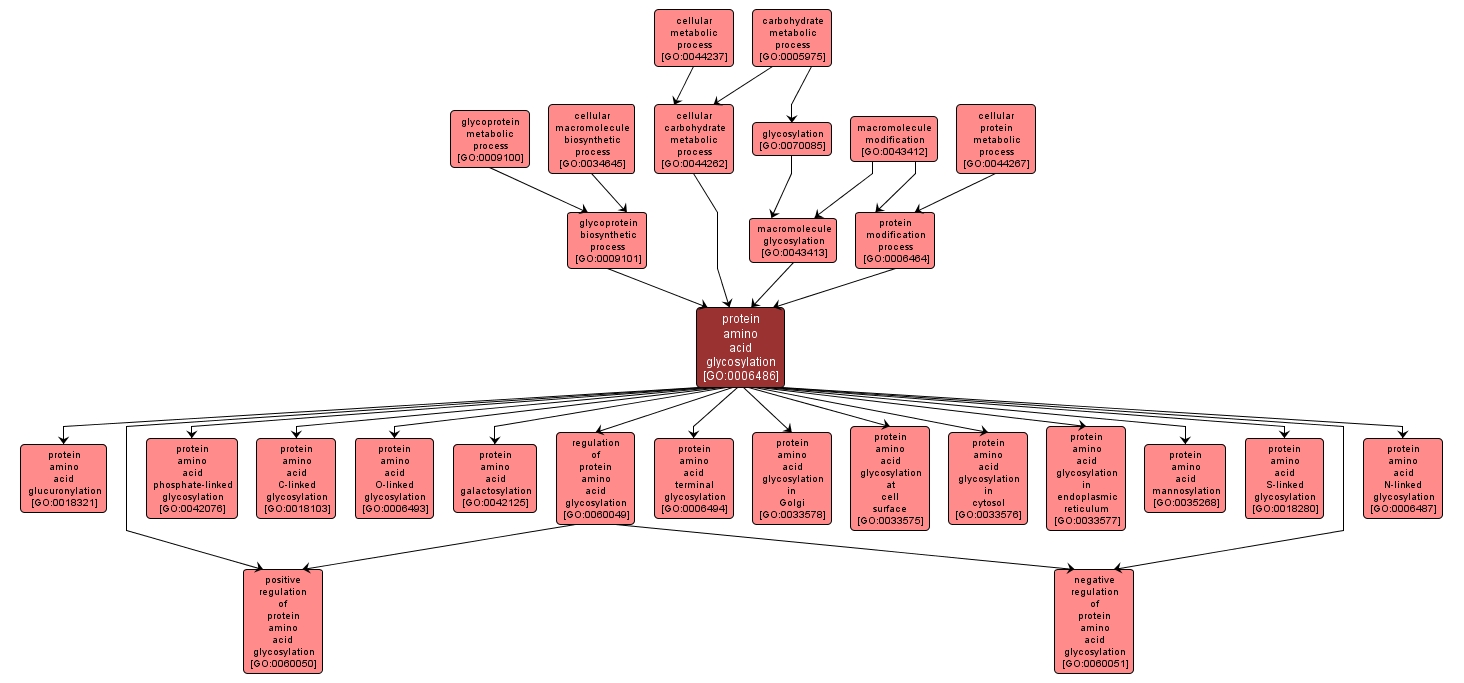GO TERM SUMMARY
|
| Name: |
protein amino acid glycosylation |
| Acc: |
GO:0006486 |
| Aspect: |
Biological Process |
| Desc: |
A protein modification process that results in the addition of a sugar unit to a protein amino acid, e.g. the addition of glycan chains to proteins. |
|

|
INTERACTIVE GO GRAPH
|














